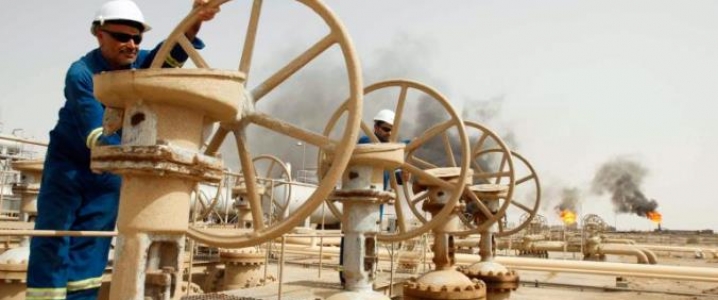Geopolitics is once again driving oil prices, and after a pause this summer, tension and unrest could be back at the top of the agenda.
Last week, rioters burned down several buildings in Basra, a major city in Southern Iraq and home to most of the country’s oil production. Despite its oil riches, southern Iraq remains deeply unequal, which has fueled resentment and anger among the neglected populace even as international companies continue to ramp up production from Basra’s vast oil fields. Unemployment, poor public services, electricity outages (at the height of summer heat) and even contaminated water has stoked outrage.
The protests in Basra have been going on in one form or another for months, culminating last week in the burning of the headquarters of Iraqi political parties and even the Iranian consulate. The central government dispatched troops to the city and a curfew was put in place, restoring calm.
But the violence adds Iraq to the growing list of unstable OPEC countries that has rattled the oil market. “This is a dangerous escalation in a critical time period in an unstable region,” said Sunni lawmaker Salah al-Jubbouri, according to the Wall Street Journal.
Oil production has not been affected, and the powerful players that wield influence in Iraq – namely, Iran and the United States – both have an interest in not seeing the situation deteriorate. Yet, Basra suddenly looks unstable. And that is all the more notable because Iraq’s southern oil regions had avoided the ravages of war that plagued Iraq’s north after the advance of ISIS beginning in 2014.
The unrest has occurred against a backdrop of rising production and exports from Iraq. Iraq’s oil production stood at around 4.55 million barrels per day (mb/d) in July, and exports recently hit a record of 3.59 mb/d. Iraq’s oil minister tried to frame the situation as one under control. “Security forces in Basra took measures to protect oil fields and foreign employees,” oil minister Jabbar al-Luaibi told reporters in Baghdad. “Our message was clear and strong to oil majors that Iraq is safe and what is happening in Basra was a passing cloud that passed peacefully.” Related: Artificial Photosynthesis: A New Renewable Energy Source?
That remains to be seen. “It’s only a matter of time before Iraq becomes a problem” Helima Croft, the chief commodities strategist at RBC, told the Wall Street Journal. If the situation between Iraq and Iran escalates, “we are off to the races and prices could add $10 a barrel,” she said.
In another troubling development, gunmen stormed the headquarters of Libya’s National Oil Company on Monday, shooting and detonating explosives, killing at least two people and injuring nearly a dozen others. The NOC’s chairman, Mustafa Sanallah was evacuated. The attack demonstrates “the need for additional measures to ensure NOC is able to withstand those that seek to halt Libya’s recovery,” he said.
Libya’s oil production has been volatile and unstable, with a major outage at several ports in June that helped push prices up. Output fell from around 1 million barrels per day earlier this year to as low as 664,000 bpd in July, according to OPEC’s secondary sources. Production is thought to have ramped up further in August, perhaps as high as 970,000 bpd. But the latest attack is a glaring reminder that Libya is far from secure and battle between rival factions shows no signs of letting up. Related: Armed Men Storm Libya’s National Oil Corporation HQ In Tripoli
These events add to the ongoing losses expected from Iran and Venezuela, two other OPEC countries that have contributed to market tightening. "A higher oil price scenario is built on lower exports from Iran due to U.S. sanctions, capped U.S. shale output growth, instability in production in countries like Libya and Venezuela and no material negative impact from a U.S./China trade war on oil demand in the next 6-9 months," Harry Tchilinguirian, oil strategist BNP Paribas, said at the Reuters Global Oil Forum. “We see Brent trading above $80 under (that) scenario.”
Global oil inventories have declined to “critical levels,” energy expert Robert Raymond said on CNBC last week. He argues that there is also serious supply trouble in the medium-term. “The industry, for the last three years, has been chronically underinvesting and continues to do so at a rate of only 60 percent of cash flow being reinvested in the form of capex,” Raymond argued. “The last time that happened [was] in 2004 and '05 which precipitated a spike to $147 a barrel.”
That may be a problem for another day. In the near-term, the outages at more than a few OPEC countries is helping put upward pressure on prices.
ADVERTISEMENT
By Nick Cunningham of Oilprice.com
More Top Reads From Oilprice.com:
- Erdogan Accuses U.S. Of Supplying Oil To Syrian Rebels
- The Downside For Oil Is Limited
- How Much Longer Can The Saudis Suppress Oil Prices?


















